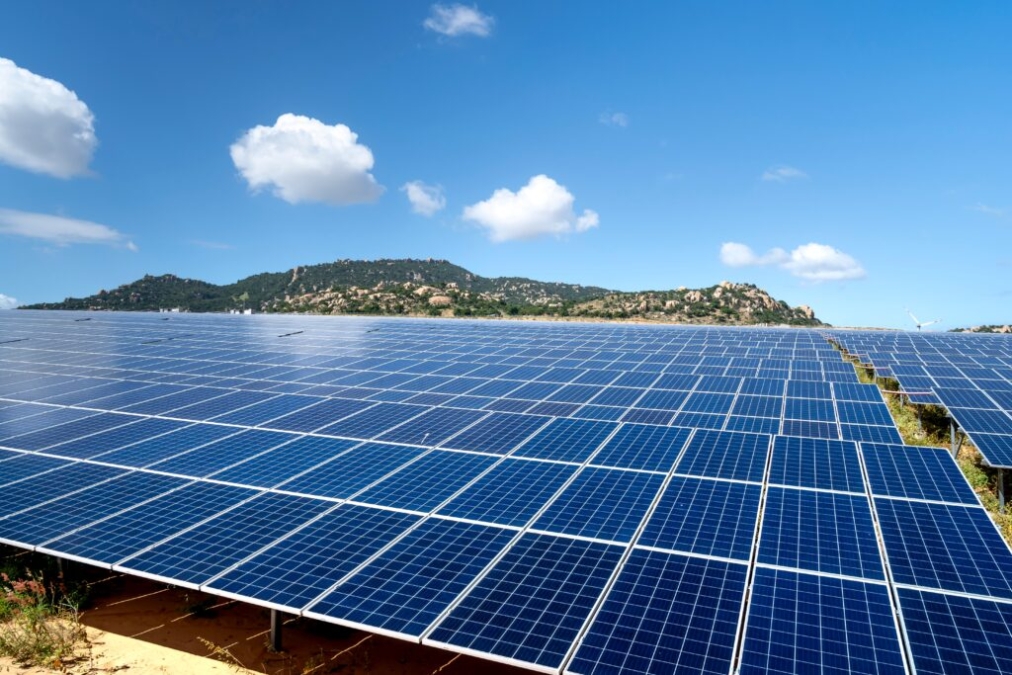NATION SOLAR MISSION

The National Solar Mission is an initiative of the Government of India and State Governments to promote solar power. The mission is one of the several policies of the National Action Plan on Climate Change. The program was inaugurated as the Jawaharlal Nehru National Solar Mission by former Prime Minister Manmohan Singh on 11 January 2010 with a target of 20 GW by 2022. This was later increased to 100 GW by Prime Minister Narendra Modi in the 2015 Union budget of India. India increased its utility solar power generation capacity by nearly 5 times from 2,650 MW on 26 May 2014 to 12,288.83 MW on 31 March 2017. The country added 9,362.65 MW in 2017–18, the highest of any year. The original target of 20 GW was surpassed in 2018 (counting only utility installed capacity), four years ahead of the 2022 deadline.
India had a total rooftop solar installed capacity of 6.1 GW as of 30 June 2021.
The objective of the National Solar Mission is to establish India as a global leader in solar energy, by creating the policy conditions for its diffusion across the country as quickly as possible. Under the original plan, the Government aimed to achieve a total installed solar capacity of 20 GW by 2022. This was proposed to be achieved in three phase. The first phase comprised the period from 2010 to 2013, the first year of the 12th five-year plan. The second phase extended up to 2017, while the third phase would have been the 13th five-year plan (2017–22). Targets were set as 1.4 GW in the first phase, 11–15 GW by the end of the second phase and 22 GW by the end of the third phase in 2022.
The Government revised the target from 20 GW to 100 GW on 1 July 2015. To reach 100 GW by 2022, the yearly targets from 2015 to 2016 onwards were also revised upwards.] India had an installed solar capacity of 161 MW on 31 March 2010, about 2 and half months after the mission was launched on 11 January. By 31 March 2015, three months before the targets were revised, India had achieved an installed solar capacity of 3,744 MW.]
Year-wise targets
To meet the scaled up target of 100,000 MW, MNRE has proposed to achieve it through 60 GW of large and medium scale solar projects, and 40 GW through rooftop solar projects.
|
Year-wise Targets (in MW) |
||||||||
|
Category |
2015–16 |
2016–17 |
2017–18 |
2018–19 |
2019–20 |
2020–21 |
2021–22 |
Total |
|
Rooftop Solar |
200 |
4,800 |
5,000 |
6,000 |
7,000 |
8,000 |
9,000 |
40,000 |
|
Ground Mounted Solar projects |
1,800 |
7,200 |
10,000 |
10,000 |
10,000 |
9,500 |
8,500 |
57,000 |
|
Total |
2,000 |
12,000 |
15,000 |
16,000 |
17,000 |
17,500 |
17,500 |
97,000 |
Growth of utilities installed solar capacity
The following table records the growth of the utilities installed solar capacity in India for every year of the National Solar Mission. All capacities are as on 31 March of the listed year.
Rooftop solar capacity
India had a total rooftop solar installed capacity of 6.1 GW as of 30 June 2021. The country added 862 MW of rooftop solar capacity during the first half of 2021, recording a 210% increase over the same period in 2020.
Domestic content complaint
Guidelines for the solar mission mandated cells and modules for solar PV projects based on crystalline silicon to be manufactured in India. That accounts to over 60% of total system costs. For solar thermal, guidelines mandated 30% project to have domestic content. A vigorous controversy emerged between power project developers and solar PV equipment manufacturers. The former camp prefers to source modules by accessing highly competitive global market to attain flexible pricing, better quality, predictable delivery and use of latest technologies. The latter camp prefers a controlled/planned environment to force developers to purchase modules from a small, albeit growing, group of module manufacturers in India. Manufacturers want to avoid competition with global players and are lobbying the government to incentivize growth of local industry.
Market responded to domestic content requirement by choosing to procure thin film modules from well established international players. A significant number of announced project completions are using modules from outside India.
US Trade Representative has filed a complaint at World Trade Organization challenging India’s domestic content requirements in Phase II of this Mission, citing discrimination against US exports and that industry in US which has invested hugely will be at loss. US insists that such restrictions are prohibited by WTO. India however claims that it is only an attempt to grow local potential and to ensure self sustenance and reduce dependence.


